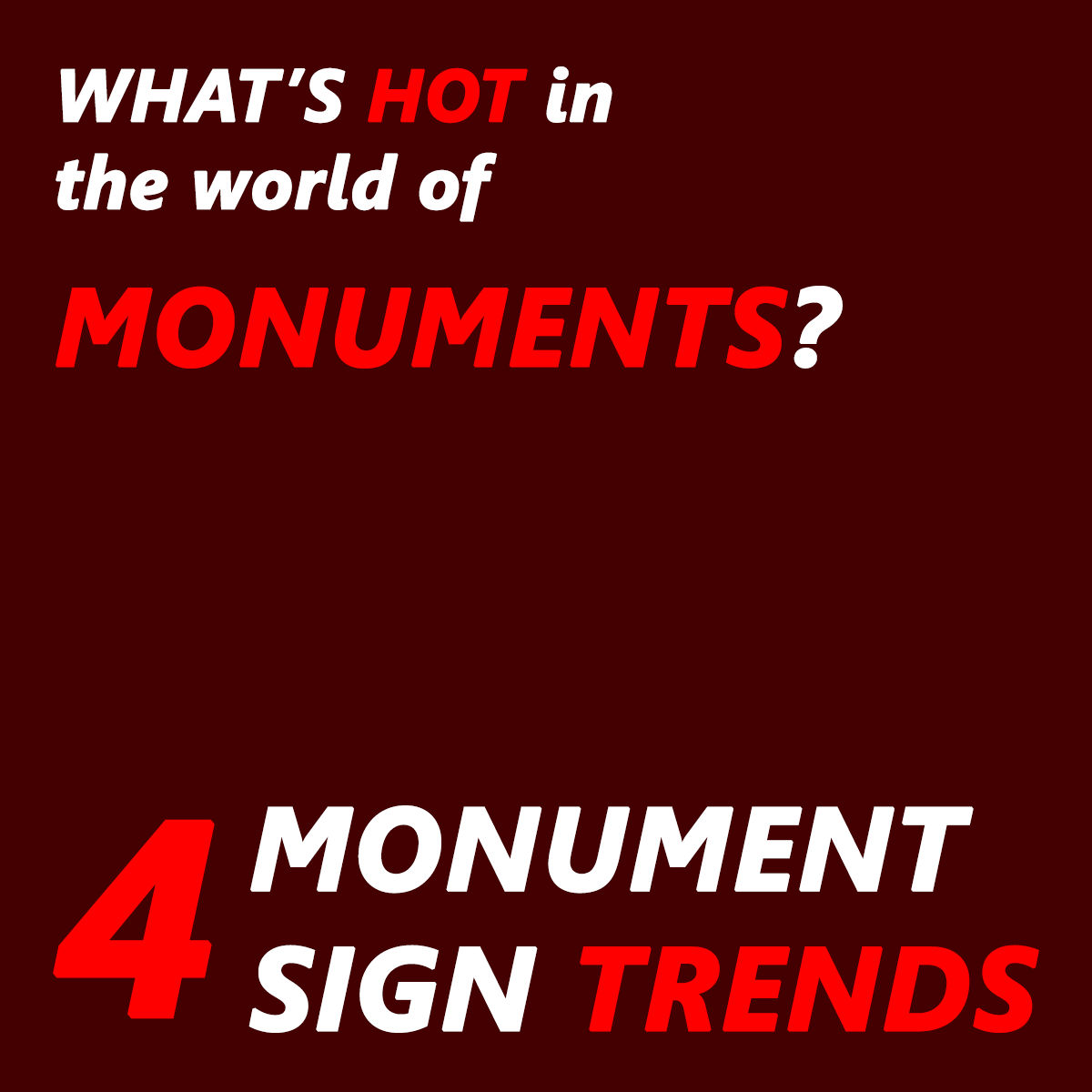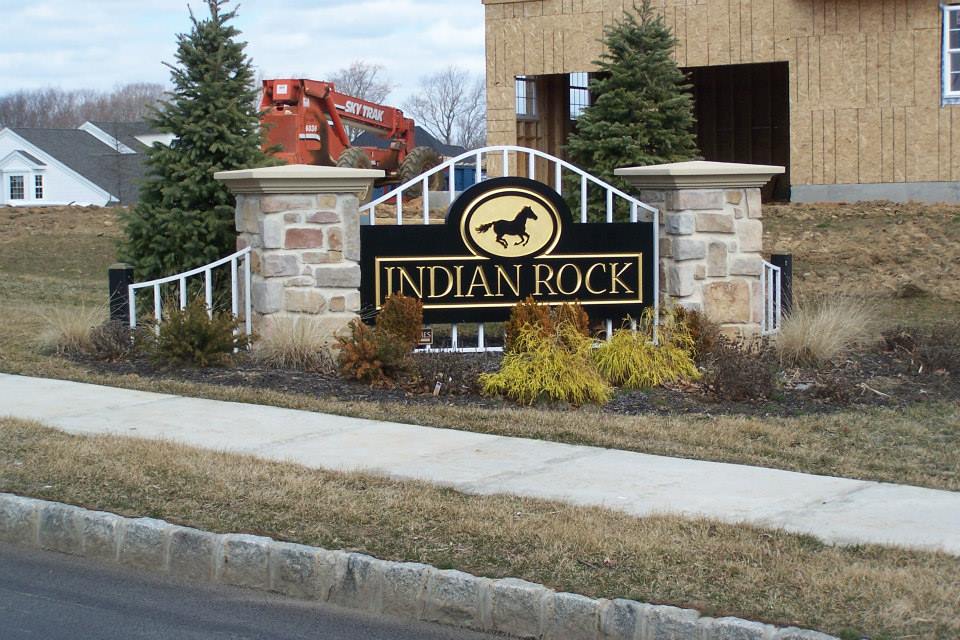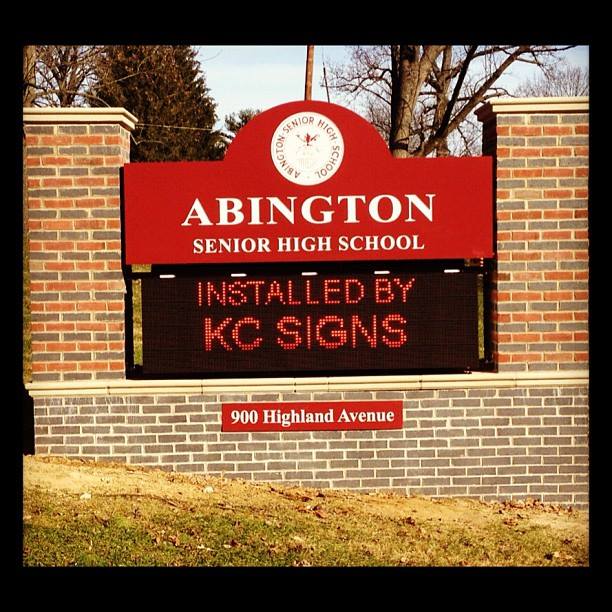 Trying to decide on a sign? A monument sign may be right for you! Don’t know what a monument sign is? You’ve probably seen them all over, whether at churches, office buildings, shopping complexes, school campuses, wherever. They sit low to the ground and are constructed out of materials like brick and stone. Monuments are classic and versatile, and because they generally sit at eye level, they are very inviting to visitors rather than imposing. Based on your business, organization, or property’s needs, monument signs can be designed in a variety of ways. Here are four of the latest trends in monument sign design that are sure to make your sign stand out.
Trying to decide on a sign? A monument sign may be right for you! Don’t know what a monument sign is? You’ve probably seen them all over, whether at churches, office buildings, shopping complexes, school campuses, wherever. They sit low to the ground and are constructed out of materials like brick and stone. Monuments are classic and versatile, and because they generally sit at eye level, they are very inviting to visitors rather than imposing. Based on your business, organization, or property’s needs, monument signs can be designed in a variety of ways. Here are four of the latest trends in monument sign design that are sure to make your sign stand out.
1. Matching your moment sign design to your building’s architecture
Common materials for monument signage include brick, stone, split face block, and stucco–as well as foam that replicates these materials. The masonry elements of monuments give you the opportunity to match your sign to your building. For example, if your office building is brick, your monument sign can also incorporate brick. Not only can the material match your building, but the shape of your monument can match the contours of the architecture. This enables you to streamline the design with that of your building and create a consistent look and feel, which can do wonders for establishing your branding.
2. Saving on costs with foam that replicates masonry
Monument signs look classy and high-end, and this is a major reason why so many establishments are attracted to using them. A monument sign can make a powerful statement about what your business or organization is; a quality sign makes a statement about your quality. Because of the masonry work involved in creating a structure out of materials like brick and stone, many monument signs are on the higher end of the price spectrum compared to other sign types.
However, it is possible to achieve the high-end look of monument signage without breaking the bank! Many businesses that lack the budget for masonry work are now opting for monument signs made from foams with veneers that can replicate stone, brick, and other materials. These signs are not only less expensive, but they are lighter and easier to remove if you wish to replace your sign later down the line. Most people cannot tell the difference between signs that use the faux materials and signs that use the real ones. That doesn’t mean there’s never a reason to shell out the big bucks for a natural material like stone. Signs made from these materials are extremely durable and offer the beauty of natural variation in the form of shading, coloring, and veining, but if this isn’t as important to you, a foam monument can get the job done, so they’ve been gaining a lot of popularity.
 3. Adding illumination to your monument signage
3. Adding illumination to your monument signage
Any type of sign can be added to a monument structure, and so can a variety of features. Making your sign light up goes a long way toward grabbing the attention of passersby, especially at night when signs might otherwise be easily missed. Of course, one simple way to make a sign visible at night is by adding spotlights that shine on it, but using an illuminated sign takes it further. Plus, if you use LED, your sign will be energy-efficient. In some cases, spotlights may better match the classic properties of your monument sign and your building, but if you’re interested in mixing classic with modern, LED is the way to go. Options for adding LED to a monument sign include:
- Channel letters: Individual light-up, three dimensional letters that can be mounted to your sign.
- Sign cabinets: Essentially a “cabinet” with LED inside that displays your logo or graphic. Often called “box signs” though not all are rectangular; sign cabinets can be fabricated into custom shapes.
- Digital message centers: Customizable digital signs with scrolling messages or graphics that can be changed as often as you want. Many use cloud technology so you can update them from anywhere on any device.
4. Adding a carved sign made from high density urethane
Though they may not take advantage of current technology the way LED signs do, carved signs are a classic that hasn’t gone out of style yet. Carved signs be created to look “vintage,” which is completely on-trend! A carved sign mounted to a monument creates a traditional look that emanates sophistication. Though you may immediately think of wood when you hear the word “carved,” many modern carved signs are created from high density urethane (HDU), a material that has grown in popularity because it resists the weather damage, moisture damage, and warping that affect wood. HDU signs are a trend that is sure to stick around because these signs can last up to 20-25 years!
Design your monument sign around your brand
No matter what kind of monument sign you choose, you’re sure to find a way to make a statement. Because there are so many ways to mix and match the materials, choosing a monument sign design can seem a bit overwhelming without the guidance of a sign designer. However, a large part of choosing the perfect sign for your building is thinking about how you want to represent yourself to the public, and with a monument sign, it’s not hard to customize your sign to your unique branding.


